This post may contain affiliate links. Please read our disclosure policy.
Nutty delicious Kabocha Squash recipe (Japanese pumpkin), simmered in a naturally sweet and savory sauce. With added mushrooms and ground chicken, it makes a great kabocha pumpkin squash meal combo. Just add all the ingredients to a bag and freeze for later. You’ll love this one-pan wonder for a weeknight dinner!
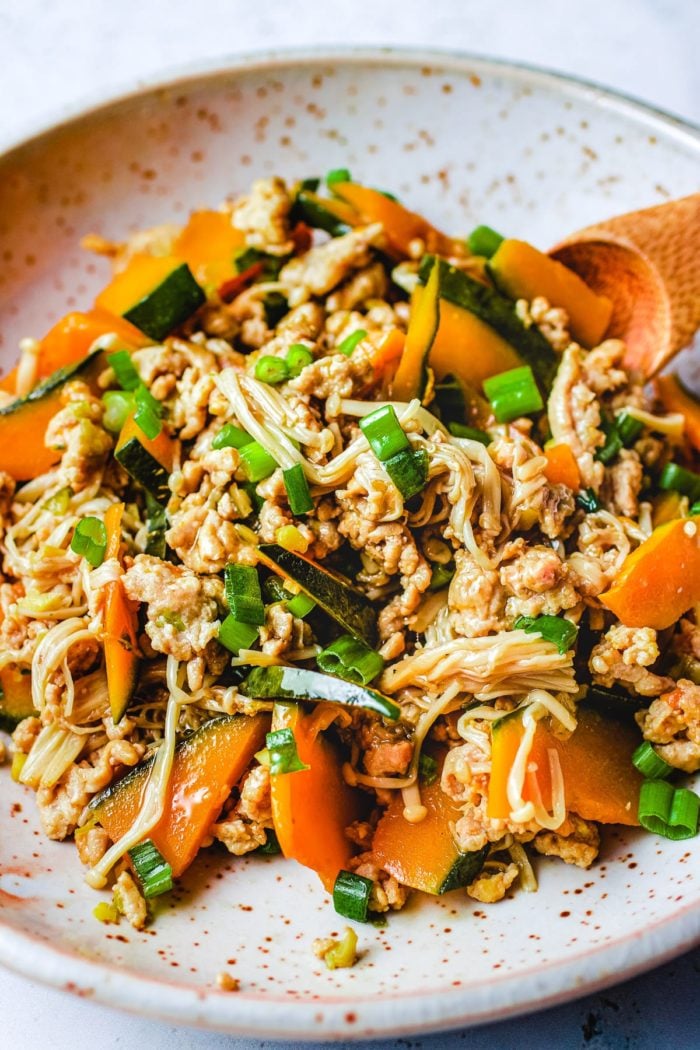
Table of Contents
- Kabocha Squash Recipe
- What is kabocha squash?
- Is kabocha squash healthy?
- How to tell if a kabocha squash is ripe?
- How to cut kabocha squash?
- Freezer meal prep tips!
- What to do with extra uncooked Kabocha?
- More Winter Squash Recipes
- More Paleo Meal Prep Recipes
- Simmered Kabocha Squash Recipe with Chicken and Enoki Mushrooms
Kabocha Squash Recipe
Kabocha squash is probably my favorite winter squash. It has a sweet flavor that tastes like sweet potato mixed with pumpkin. Some people even describe the flavor similar to roasted chestnuts. In the past, I’ve made Kabocha squash soup and it is one of my most popular winter soup recipes on the blog.
In the U.S., most often people roast kabocha as a side dish. This Japanese pumpkin is naturally sweet and savory and makes a great addition to a wide variety of savory main dishes. Today, however, I want to show you one of the most common ways to enjoy Kabocha the Japanese way.
You can use kabocha beyond roasting or making soup! Kabocha has a hearty and sturdy texture than butternut squash or pumpkin. Japanese pumpkin is perfect for stir-fry and for freezer meal prep!
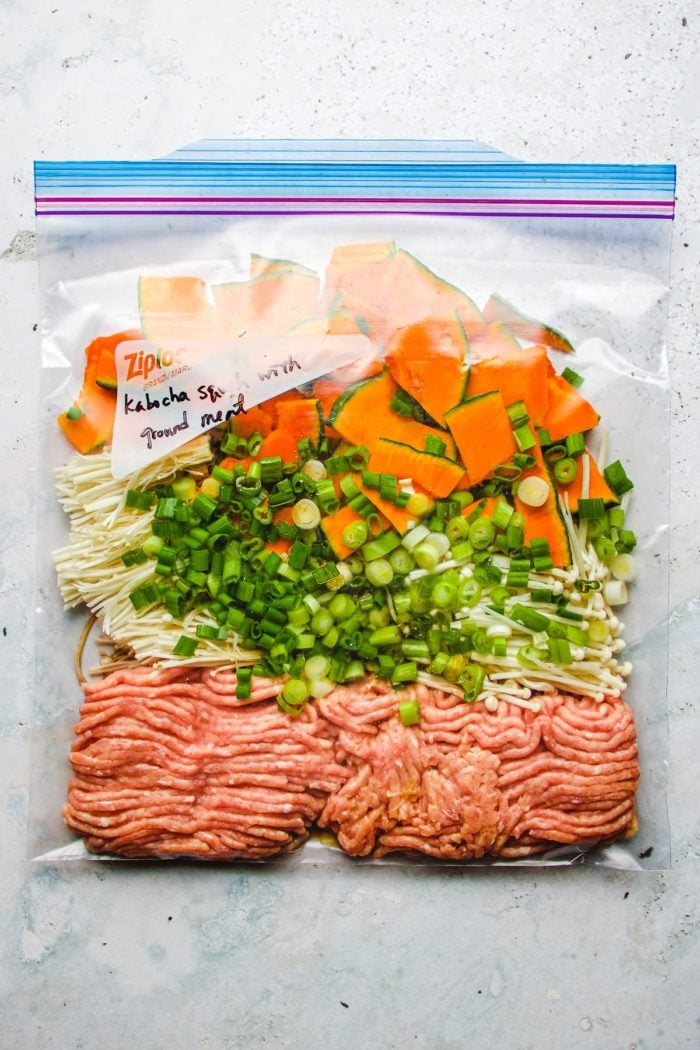
What is kabocha squash?
Kabocha (カボチャ, 南瓜) is a type of winter squash. It’s also called kabocha squash or Japanese pumpkin in North America. It has a deep-green exterior with bumpy looking skin and yellow-orange color on the inside. Kabocha tastes sweeter than butternut squash. It has a sweet flavor that tastes like sweet potato mixed with pumpkin. When cooked, the texture and taste are similar to roasted chestnuts.
Is kabocha squash healthy?
Japanese pumpkin (kabocha) is packed with nutrition! Kabocha is full of beta carotene, iron, vitamins A, C, fiber and some B vitamins. According to organic authority, “one cup of kabocha has 40 calories compared to butternut squash’s 60 and it has less than half the carbs of butternut squash (7 grams vs. 16 grams).
How to tell if a kabocha squash is ripe?
Simply put, look for a dark green color exterior that feels a bit heavy in hands. The outer exterior should be green and not yellow or orange.
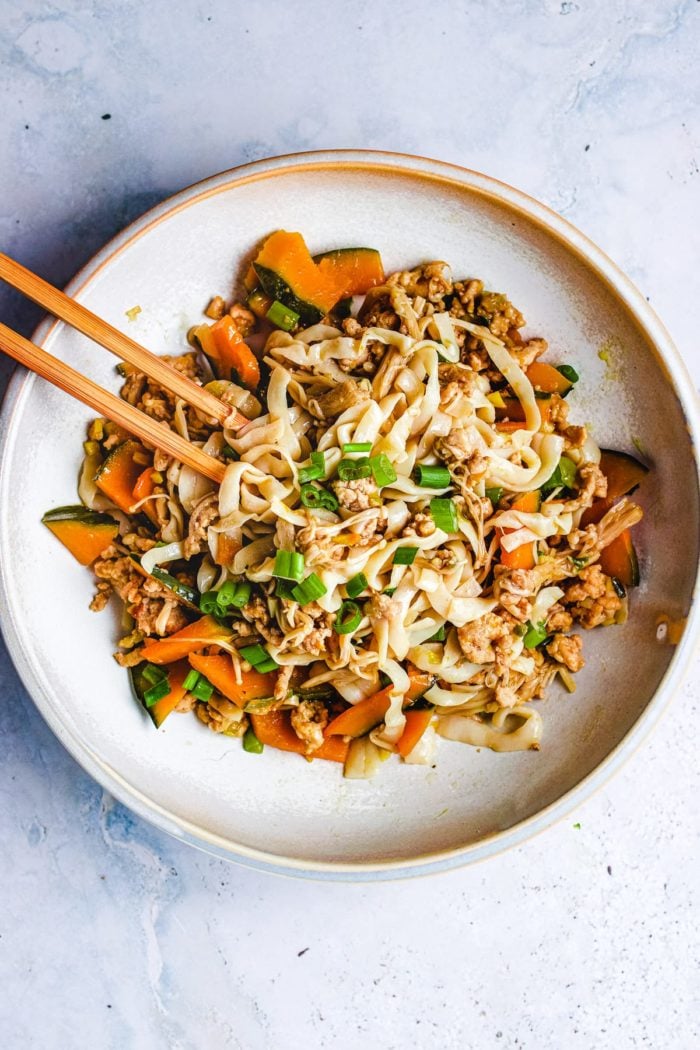

How to cut kabocha squash?
- Scrub the whole squash under running water with a scrubber.
- Place a damp paper towel under a large cutting board so the board won’t move around.
- Use a sturdy and sharp chef’s knife. Cut the stem end off to create a flat surface.
- Slowly cut the squash vertically, from stem end to bottom end, in rocking motion.
I made a video on how to cut butternut squash. It employs similar techniques. Check out: How to roast butternut squash.
The kabocha skin is edible when cooked. It has an earthy flavor so don’t peel it away! If you still find it difficult to cut a kabocha squash, some people recommend roasting a whole squash in the oven for 10 minutes at 375F or microwave it for about 4-5 minutes. Be careful when you remove it from the oven/microwave, the pumpkin squash will be hot!
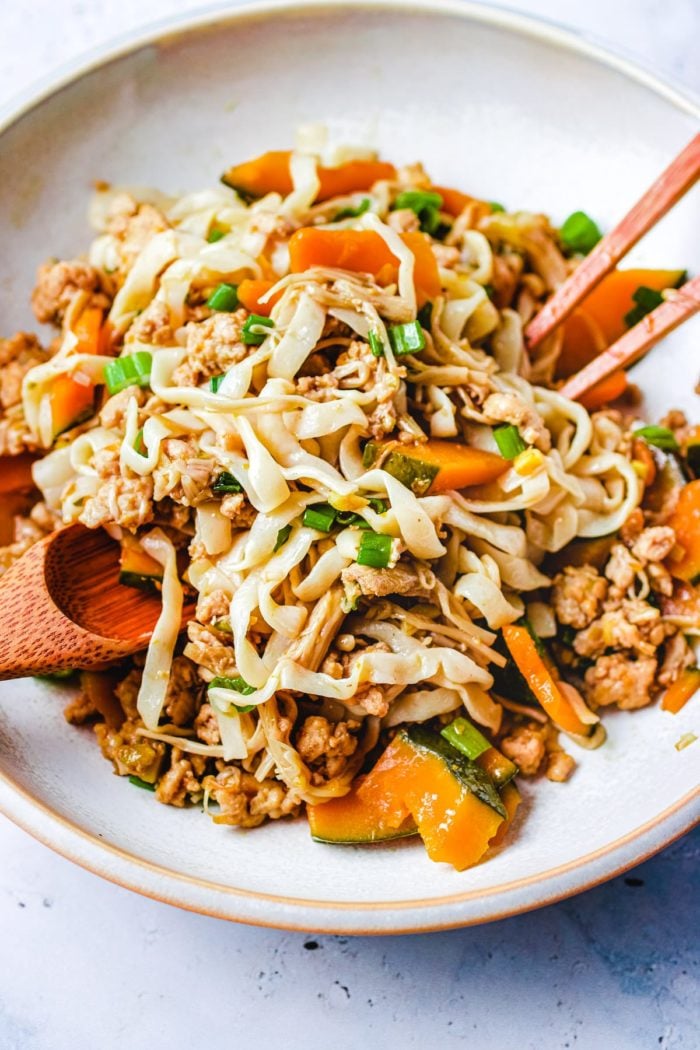
Freezer meal prep tips!
- One of the biggest benefits of making this dish is that it’s super easy. Just add all the ingredients to a bag, freeze, and cook it when you need it. Kabocha squash freezes well in the freezer and makes a great meal prep addition. If you can’t find kabocha, use butternut squash, acorn squash, or pumpkin. You’ll need to peel the skin of the latter three though.
- I recommend storing the ingredients in one layer and flat in the freezer, just like the photo demonstration above. It will be easier to defrost or cook later on.
- You can cook the food from frozen or defrosted. I include both instructions below in the recipe notes section. You can also cook the whole meal in advance and portion it for 2-3 meals. They should last 3 days in an airtight container in the fridge.
What to do with extra uncooked Kabocha?
Uncooked and pre-cut kabocha stores perfectly in the freezer. They will last about 2-3 months it’s perfect to use them in freezer meal prep. Cooked kabocha will last about 3-4 days in the fridge.

More Winter Squash Recipes
- Roasted Butternut Squash Soup
- Cumin Beef Stir-Fry with Roasted Butternut Squash
- Turmeric Ginger Kabocha Squash Soup
- Chicken with olives and squash
- Roasted delicata squash
- Cumin beef with roasted butternut squash
- Easy pumpkin soup
- Instant Pot pumpkin chicken
- Roasted cherry tomatoes with delicata squash
More Paleo Meal Prep Recipes
- Meal Prep Gyoza Meatballs
- Whole30 Korean Beef Bowl
- Whole30 Meal Prep Recipes
- Paleo Asian Taco Meal Prep Bowls
- Easy Thai Green Curry Chicken
- Crispy Lemon Thyme Chicken Thighs
- Lion’s Head Meatballs
- Roasted Lemon Chicken Legs
- More Paleo meal prep recipes
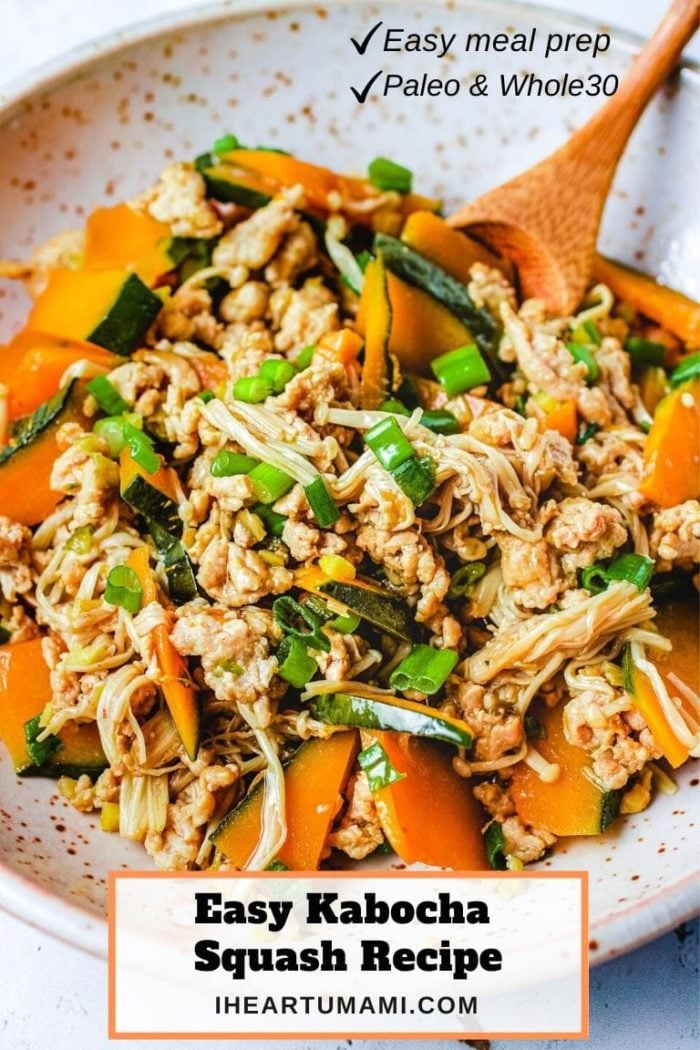
Simmered Kabocha Squash Recipe with Chicken and Enoki Mushrooms
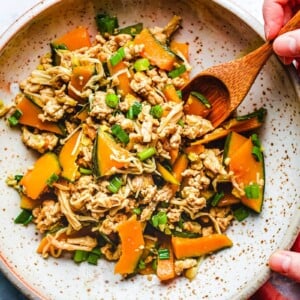
Ingredients
- ⅔ lb. Kabocha squash butternut squash, or pumpkin, seeds removed
- 2 bulbs Scallions chopped and separate white and green parts
- 3 tsp finely minced ginger
- 100 gram (3.5 oz.) enoki or fresh shiitake mushrooms optional
- 2 tbsp Avocado oil
- Coarse salt to taste.
- ½ lb. ground chicken or turkey, or pork
- 1-2 tbsp chicken or vegetable stock or water
- Toasted sesame oil garnish (optional)
- 7 oz. shirataki noodles, Fettuccine style optional
Sauce:
- 2 tsp toasted sesame oil
- 2-3 tbsp coconut aminos or 1-1.5 tbsp homemade vegetarian oyster sauce
- 1 tbsp rice vinegar
Instructions
- Scrub/wash the kabocha squash clean and pat dry. Dice it into thin pieces, about ⅛-inch in thickness and 1.5 to 2-inches wide. If use Kabocha, leave the green color skin on. If use butternut or pumpkin, please peel the skin first.
- Prepare scallions and ginger. For enoki mushrooms, trim away about 1-inch of the root section and dice the bundle in half. Use your fingers to roughly tear them into small bite size strings. Set aside ready to use. If use shiitake, thinly slice the caps.
- In a well-heated large skillet, add oil. Saute ginger and white scallion parts with a pinch of salt over medium heat until fragrant, about 5-10 seconds.
- Turn heat to medium-high, add ground meat. Season with 2 pinches of salt and use a wooden spoon to break up the meat. Saute until it’s no longer pink, about 2-3 minutes.
- Add squash, mushrooms, and the sauce. Lower the heat to medium. Give a quick toss then add 1-2 tbsp stock and cover with a lid to simmer until the squash is tender, about 5-6 minutes. Stir occasionally.
- Taste and make seasoning adjustments. Perhaps more coconut aminos or more salt, if preferred. Off heat. Drizzle with toasted sesame oil, if using. Garnish with green scallion parts. Serve hot or warm.
- If adding low carb shirataki noodles, drain and rinse the noodles according to the package instructions. Toss the noodles in Step 6 and serve!
Notes
- Dice the squash, chop the scallions and ginger, prepare mushrooms, and set aside the sauce ready to use.
- In a large freezer friendly ziplock bag, add ground meat, mushrooms, ginger, scallions, and squash. Pour the sauce into the bag. Try to keep the items in the bag as flat as possible and in one layer. Just like the photo example above.
- Squeeze out the air. Label the bag with date. Store it flat in the freezer until completely frozen. Best use in 2 months.
- Add 1-2 tbsp oil to a large well heated skillet. Dump the ingredients in the bag to the skillet with ¼ cup water. Cover with a lid and bring it to boil then lower the heat to medium-low. Simmer for 10-20 minutes (if cook from frozen) or about 10 minutes (if defrosted). Use a wooden spoon to break up the meat periodically.
- When the meat is cooked through and the squash becomes tender, taste and make seasoning adjustments. Perhaps more coconut aminos or more salt, if preferred. Off heat. Drizzle with toasted sesame oil, if using.
- Note: It might seem like a lot of liquid, especially cook from frozen but the liquid will evaporate during cooking. If not, open the lid to allow the moisture to escape, in the last 5 minutes or so.
- The nutritional label is calculated with shirataki noodles.
- If use pumpkin, butternut squash or acorn squash, peel the skin first.
Nutrition
Nutrition information is automatically calculated, so should only be used as an approximation.
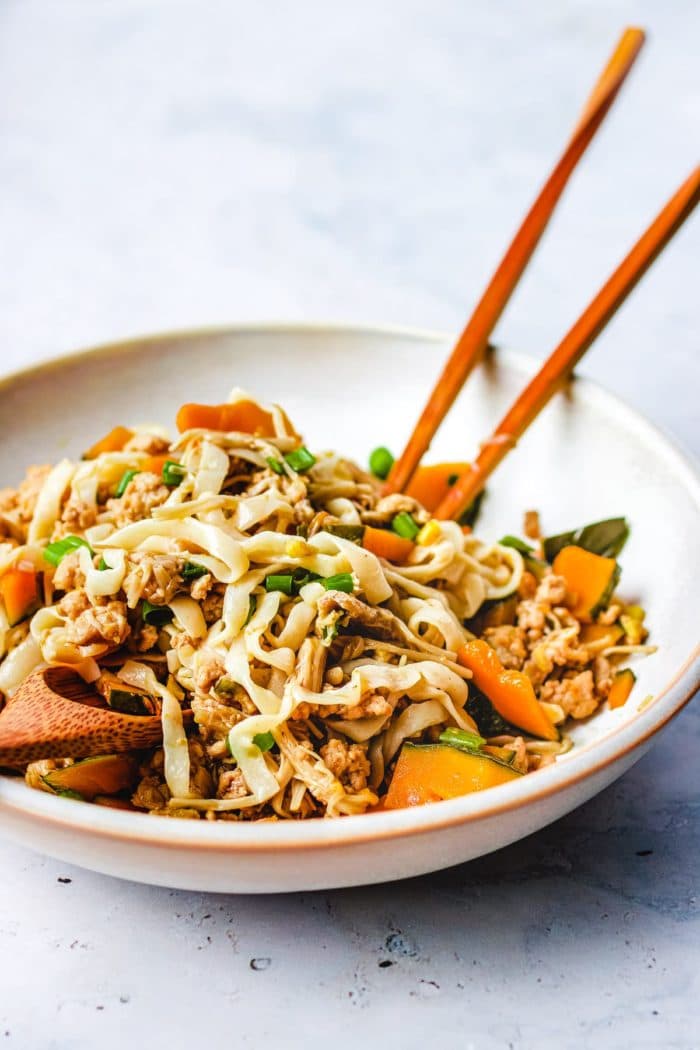
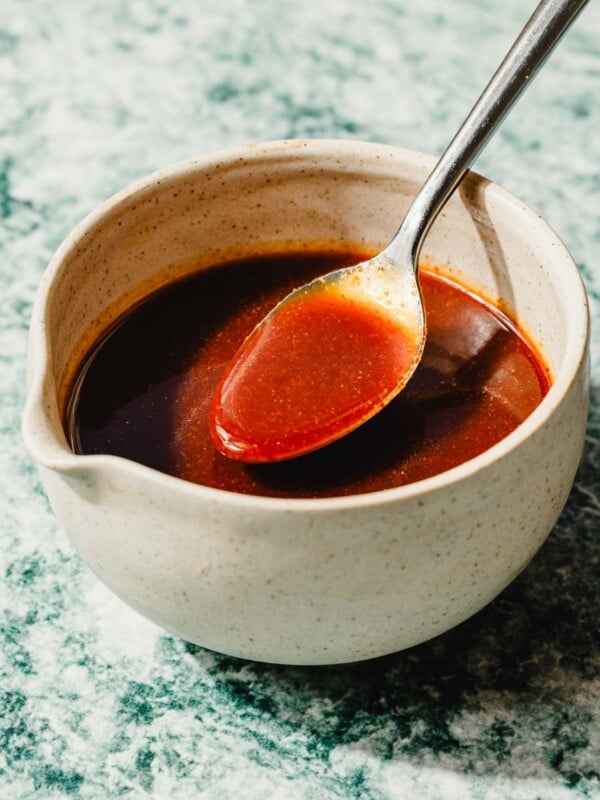
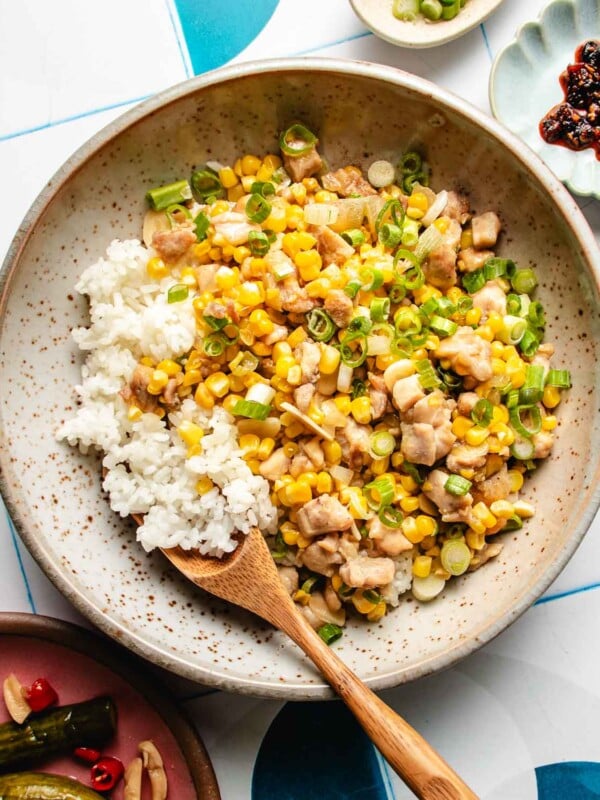
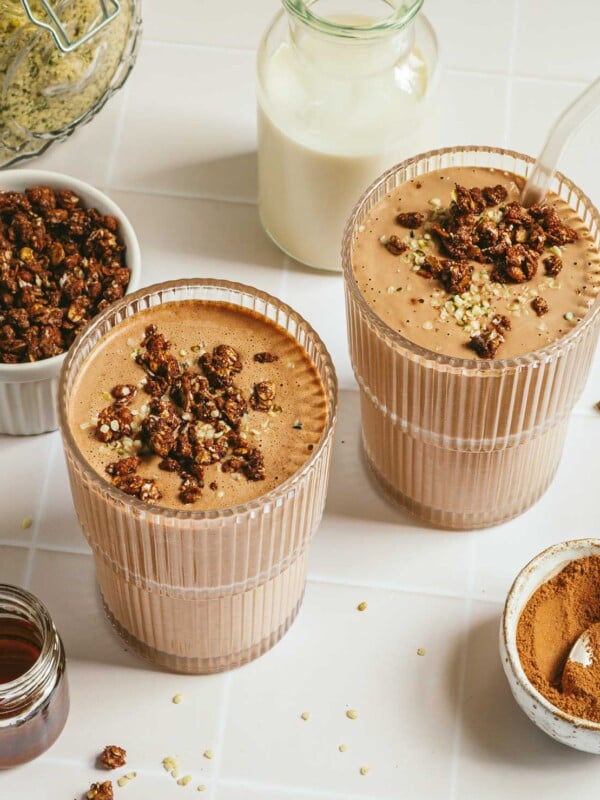
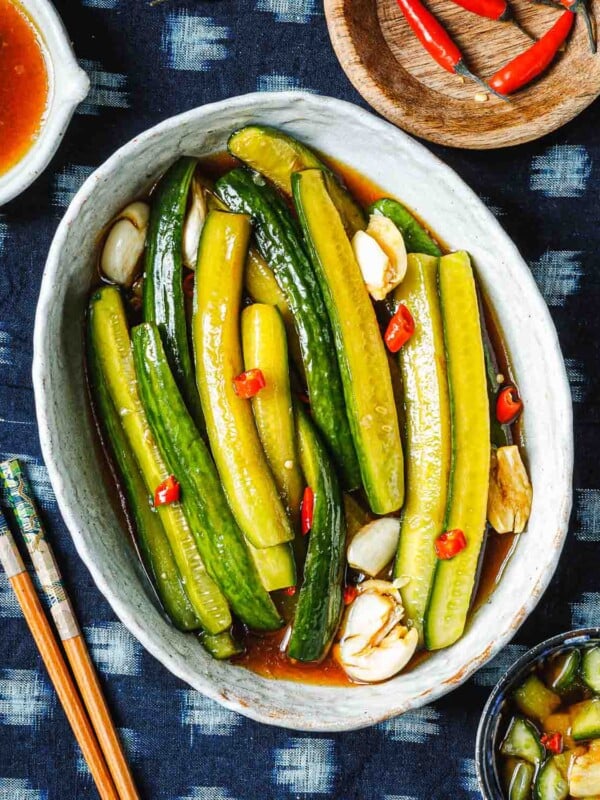









Absolutely loved this! Had to use spaghetti squash, ground turkey. Simple to make and delicious.
Thank you so much! Yay! Yes, ground turkey works perfectly, too!
So tasty! My toddler loves it and it was so simple and delicious to make with frozen leftover Kabocha. Thanks for a wonderful recipe!
I’m so happy you found this recipe and gave it a try. Thank you so much!
ANOTHER WINNER! Easy, delicious and nutritious! I made this with Acorn Squash because that’s what I could find. I peeled most of the skin off with a peeler because I find it too distractingly hard even when cooked.
It was sooooooooooo good. I also used an “umami mushroom” pack from the store.
Thank you for this!! I plan of meal prepping this for my postpartum days!
Thank you so much!
This recipe is awesome! It was my first time cooking kabocha squash. I will definitely make again 🙂. But I’m wondering if the cooked filling will freeze well? I live alone but this made a massive amount for me. I’m thinking of freezing a portion or two for later. Any ideas on how long it will last in the freezer?
Thanks, Katrina! Yes. You can freeze the cooked version. I would portion it out before freezing so it will be easier to defrost and reheat. 🙂
Made this tonight without the noddles. Doubled the recipe and added mirin with the rest of the liquids. I subbed soy sauce for liquid aminos and used a pound of ground turkey. A winner! I’ll definitely be making it again.
Will the mushrooms freeze okay? I have always been told that freezing them raw will make them mushy later on.
Yes. That should be fine 🙂
I love how colorful and healthy this recipe is!
This looks so delicious, definitely need to check out those noodles and I love the meal prep option as well!
This dish looks so good. What a wonderful winter comfort food!